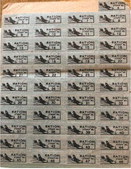‘If you don’t need it, don’t buy it’ way of life in the 1940s


Cadott native Judy (Gannon) Gilles was born in May 1945, and as a baby, has no memory of the rationing that took place during World War II. Instead, Judy relies on the knowledge he...
